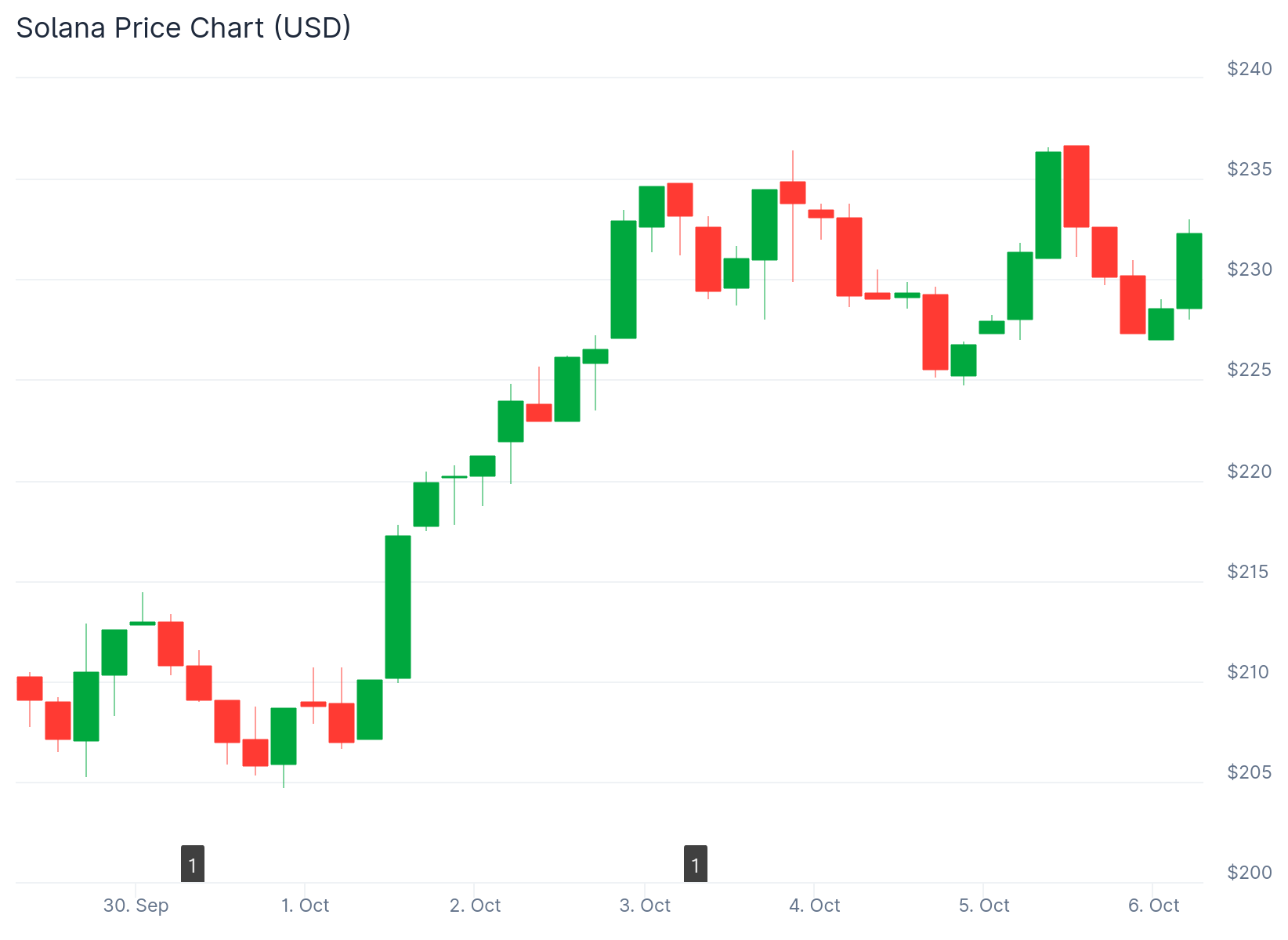TLDR
- Solana traded at $234 in early October 2025 following a 16% weekly price increase
- The $240-$245 resistance zone represents a critical breakout level for continued upward movement
- Validators approved the Alpenglow upgrade, cutting block finality from 12 seconds to 150 milliseconds
- Institutional treasuries Forward and Helius control approximately 2.5% of total SOL supply
- Historical patterns suggest 50-60% rallies typically follow 25% corrections
Solana reached $234 in early October 2025 after posting a 16% gain over seven days. The token also climbed 14% during the past month.

The $200 price level served as a foundation for the recent advance. Traders observed steady buying activity following a multi-week correction that eliminated leveraged positions.
Technical charts displayed a higher-low pattern forming since late September. This structure indicated consistent accumulation by market participants.
The recovery from $200 restored confidence among traders. Previous resistance zones transformed into support levels as the market structure improved.
Momentum indicators remained neutral at press time. The Relative Strength Index showed room for additional upward movement.
The Moving Average Convergence Divergence indicator signaled a potential bullish crossover. This suggested strengthening momentum in the near term.
Critical Price Levels and Technical Patterns
Market observers focused on the $240-$245 resistance range. Breaking above this zone could trigger movement toward $260 or higher.
Technical analyst ZYN documented a repeating pattern in SOL price action. The token typically corrects 25% before rallying 50-60% over subsequent weeks.
This pattern appeared three times since mid-2024. The current price behavior aligns with this historical rhythm.
If the pattern continues, prices could reach the $260-$300 range. Charts show a wedge formation that began developing in August.
Analyst Don identified potential targets near $300 based on the wedge pattern. Maintaining support above $225-$230 remains essential for this scenario.
Approximately $200 million in long positions accumulated in the $200-$220 zone. Market observer TedPillows compared this level to Ethereum’s $4,000 psychological base.
Alpenglow Upgrade Transforms Network Performance
Validators approved the Alpenglow upgrade with 98% support in September. The upgrade represented one of the highest approval rates in network history.
Block finality time decreased from 12 seconds to 150 milliseconds. The update also introduced off-chain voting and improved validator rewards.
These changes enhanced network performance and scalability. Developers proposed a 25% increase in block capacity before year-end.
The new P-token format could reduce computation costs by up to 95%. Network throughput may increase by nearly 10% following implementation.
Institutional Activity Strengthens Market Structure
Two major digital asset treasuries launched in September. Forward manages $1.5 billion while Helius oversees $500 million.
These funds collectively hold around 2.5% of total SOL supply. The institutional participation signals growing confidence in the ecosystem.
VanEck’s September report showed a 2% increase in its Solana Update index. The market capitalization remained above $125 billion at press time.
Active wallet addresses stayed stable throughout the month. Decentralized applications maintained consistent transaction volumes across the network.
On-chain data confirmed steady network activity. Transaction throughput remained healthy despite price volatility in September.
The token briefly exceeded $250 before pulling back below $200 during September’s volatile trading period. Speculation about a potential SOL exchange-traded product contributed to price swings.
At press time, Solana traded around $234 with a 2% gain over 24 hours. The market structure remained constructive with no breakdown below major support levels.



